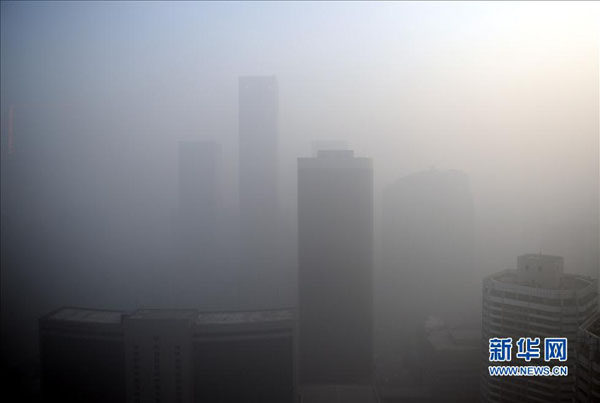Beijing-Tianjin-Hebei region to suffer from ozone pollution
Xinhua, May 19, 2017 Adjust font size:
|
|
|
Beijing, Tianjin, and parts of Hebei Province will suffer from moderate to heavy levels of air pollution on May 18 and 19, with O3 as the primary pollutant. [File Photo/Xinhua] |
Heavy air pollution, including high ground level ozone (O3) levels, is likely to hit Beijing-Tianjin-Hebei and some of its neighboring areas in the coming days, the Ministry of Environmental Protection (MEP) said on May 18.
Beijing, Tianjin, and parts of Hebei Province will suffer from moderate to heavy levels of air pollution on May 18 and 19, with O3 as the primary pollutant, the MEP said in an online statement.
Days of high temperatures have contributed to the formation of O3, a pollutant that can be harmful when reaching a certain density.
According to the National Meteorological Center, the country's northern region is likely to see temperatures above 35 degrees Celsius on May 19.
China has been imposing controls on air pollution in Beijing and nearby regions this year to combat heavy smog, caused mainly by fine particulate matter PM2.5.
The density of O3 tends to rise as PM2.5 falls, according to the Chinese Academy of Sciences, as less particulate matter creates a favorable environment for the formation of O3.
China has simultaneously rolled out measures to control the levels of PM2.5 and O3, while further research will be targeted on O3 formation mechanisms to better contain the pollutant.
A weak cold front is expected from May 20 to 23, improving air quality in the Beijing-Tianjin-Hebei region, although some areas will still face moderate levels of pollution made up primarily of O3 and PM10, MEP said.
